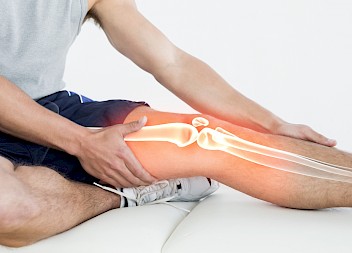Claim for Delayed Compartment Syndrome Diagnosis
If you believe you may be eligible to make a compartment syndrome claim, contact our friendly team of specialist lawyers at Medical Solicitors who can advise and support you through your claim.
We conduct many of our claims under ‘No Win, No Fee’ agreements, also known as Conditional Fee Agreements. So, you do not have to worry about how you are going to afford to bring a claim. If you believe you have suffered unnecessary complications from compartment syndrome, you have nothing to lose in speaking to us.
What is a Compartment Syndrome Claim?
Compartment syndrome compensation can be claimed where there has been delayed diagnosis of compartment syndrome or delayed surgery to treat compartment syndrome due to Medical Negligence.
Compartment syndrome refers to a situation when you develop swelling or bleeding within a compartment of your leg, arm or abdomen. When your muscles don’t have adequate space to swell or expand, the pressure inside the compartment increases, the blood supply is compromised, and this results in permanent muscle damage or even limb loss.
Client case: £299,000 after Delayed Diganosis of Compartment Syndrome
What are the Symptoms of Compartment Syndrome?
- Decreased sensation, weakness or numbness in the affected area.
- Changes to the appearance of the skin over the compartment, including: paleness, shininess, stretching or swelling.
- Severe pain that continues to build and worsen.
What are the Causes of Compartment Syndrome?
There are many causes and these can differ in acute compartment syndrome and chronic compartment syndrome. Find out the difference between acute and chronic compartment syndrome in our Medical Negligence Compartment Syndrome Guide. The informative guide also covers symptoms, causes and treatment of compartment syndrome in more detail plus key medical negligent cases of compartment syndrome.
The most common cause of acute compartment syndrome is due to a crushing injury or broken bone. This can occur after trauma from incidents such as; a car accident, playing sports or even from being kicked by a horse.
The cause of chronic compartment syndrome is usually brought on from regular and repetitive exercise such as running or cycling.

Have you had Compartment Syndrome Resulting in Amputation?
Compartment syndrome occurs when increased pressure builds in the ‘compartment’ surrounding muscle. It can then reduce and even block blood flow to the muscles and nerves. If treatment is delayed, permanent damage to the muscles and the nerves in the area occurs.
Relieving the pressure, often done with a cut to the area, can help prevent permanent damage. Not doing so fast enough, though, can cause the muscles to die and require limb amputation.
Was Treatment Fast Enough?
On most occasions, doctors react fast enough when patients complain of pain and discomfort. This pain and discomfort are because of the build-up of pressure. Doctors can diagnose this condition based on the pain, and upon seeing swollen, shiny skin. Also, doctors can do investigations to measure the pressure within the compartment. If treated promptly, the prognosis for muscle and nerve recovery in the compartment is usually very good.
In more severe cases, doctors can surgically relieve the pressure, leave the wound to remain open for a few days and then close the wound. However, if this does not happen fast enough, the pressure can build very quickly causing the muscle to die. If the muscle dies, amputation of the arm or leg may be necessary.
If a doctor does not act quickly enough, this is substandard medical care. A patient may well choose to bring a claim in medical negligence and claim compartment syndrome compensation.
Untreated or delayed treatment of compartment syndrome can have lifelong implications including limb loss, permanent tissue damage and decreased mobility. It is important medical professionals recognise the symptoms of compartment syndrome quickly, and if they don’t, you may be eligible to make a claim.











